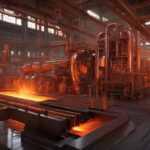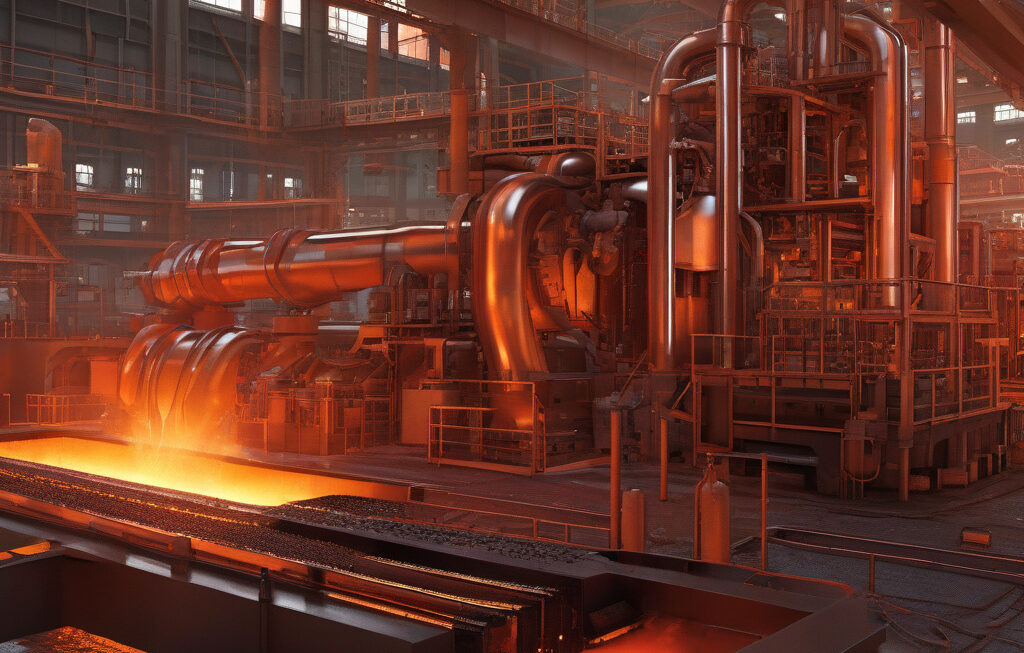Thermoelectric Material Hits Record 13% Waste Heat-to-Electricity Conversion
Researchers have introduced a new material that offers more efficient conversion of waste heat into electricity, marking a significant milestone in the realm of thermoelectric technology. This breakthrough comes in the form of a thermoelectric material that has achieved a record-high 13% efficiency in converting heat into electricity, surpassing previous models and opening up a world of possibilities for energy efficiency and sustainability.
The principle behind thermoelectric materials is simple yet revolutionary. These materials have the ability to convert heat differentials – the temperature difference between two sides of the material – into electrical energy through a process known as the Seebeck effect. By leveraging this phenomenon, thermoelectric devices have the potential to harness waste heat from various sources, such as industrial processes, car engines, and even our own bodies, and transform it into usable electricity.
The recent advancement in thermoelectric technology, with the development of a material capable of 13% waste heat-to-electricity conversion efficiency, promises a range of benefits across different sectors. In the industrial landscape, where significant amounts of heat are generated as a byproduct of manufacturing processes, thermoelectric generators could offer a sustainable solution to harness this waste heat and offset energy costs. By integrating these generators into existing systems, companies could not only reduce their environmental footprint but also improve their overall energy efficiency.
Moreover, the transportation sector stands to gain from this breakthrough, with potential applications in improving the fuel efficiency of vehicles. By capturing and converting the heat produced by engines into electricity, thermoelectric materials could enhance the overall performance of cars and trucks, leading to reduced fuel consumption and lower emissions. This innovation could play a crucial role in advancing the sustainability of transportation and driving the shift towards greener technologies.
Beyond industrial and transportation applications, the development of highly efficient thermoelectric materials also holds promise for consumer electronics and wearable devices. By incorporating these materials into electronic gadgets, such as smartphones or smartwatches, manufacturers could potentially enhance the battery life of these devices by utilizing the heat generated during operation to charge the batteries. This could lead to longer-lasting devices and reduce the need for frequent recharging, enhancing the overall user experience.
While the recent achievement of 13% waste heat-to-electricity conversion efficiency is indeed a remarkable feat, researchers are already looking towards the future and exploring ways to further improve the performance of thermoelectric materials. By fine-tuning the composition and structure of these materials, scientists aim to push the efficiency boundaries even higher, unlocking new opportunities for sustainable energy generation and utilization.
In conclusion, the latest breakthrough in thermoelectric technology, with the introduction of a material capable of 13% waste heat-to-electricity conversion efficiency, signifies a significant advancement in the field of energy conversion and sustainability. From industrial applications to transportation and consumer electronics, the potential implications of this innovation are vast and far-reaching. As researchers continue to innovate and refine thermoelectric materials, we can expect to see a future where waste heat is not just a byproduct but a valuable resource for generating clean and renewable electricity.
thermoelectric, waste heat, electricity conversion, sustainability, energy efficiency












